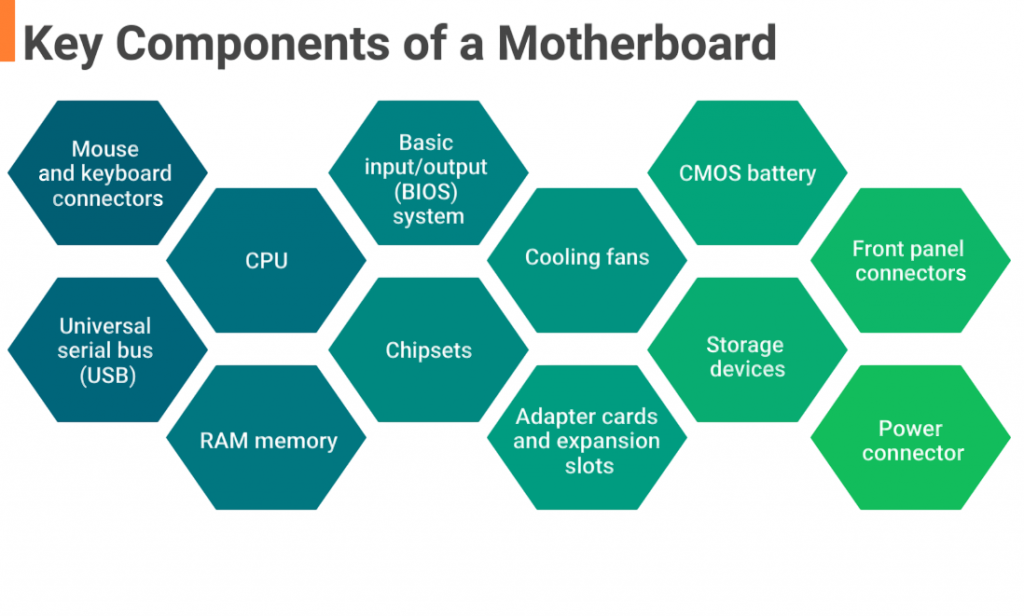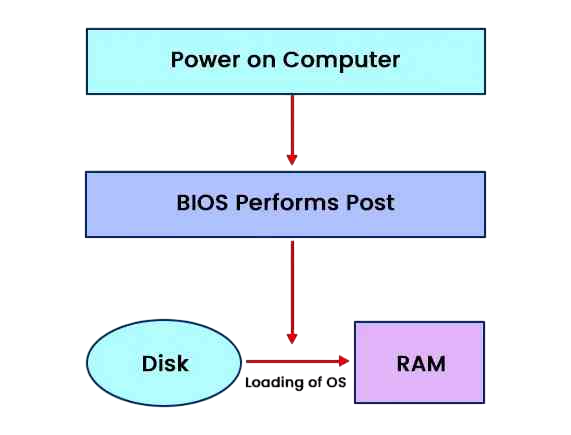
- What is BIOS?
- Definition and Full Form
- BIOS vs UEFI
- Boot Process Overview
- Motherboard and Firmware Role
- Post and BIOS Setup
- Hardware Configuration via BIOS
- BIOS Update Process
- BIOS Security Controls
- BIOS Troubleshooting Tips
- Summary
What is BIOS?
The term BIOS stands for Basic Input/Output System. It refers to a low-level firmware program embedded in a computer’s motherboard. BIOS(Basic Input/Output System) is one of the oldest yet most essential parts of modern computing. It acts as the link between a system’s hardware and its operating system. When you press the power button on a computer, the BIOS is the first to wake up. It initializes hardware components and prepares the environment for the operating system to load. To connect this foundational boot process with modern deployment workflows, exploring DevOps Online Training reveals how automated provisioning, configuration management, and CI/CD pipelines streamline system readiness from hardware initialization to full-stack application delivery. The BIOS is stored in a non-volatile memory chip, which retains its data even when the power is off. Although it is small compared to operating systems, the BIOS(Basic Input/Output System) is fundamental to a PC’s startup process.
To Earn Your DevOps Course Certification, Gain Insights From Leading DevOps Experts And Advance Your Career With ACTE’s DevOps Online Training Course Today!
BIOS vs UEFI
BIOS(Basic Input/Output System) has existed since the early IBM PC era in the 1980s, but a modern alternative has emerged: UEFI (Unified Extensible Firmware Interface). Traditional BIOS operates in 16-bit real mode, limiting the amount of memory it can use and restricting booting from large drives. UEFI, on the other hand, supports 32-bit or 64-bit operation, can manage drives over 2 TB due to GPT (GUID Partition Table) support, and offers a more graphical interface for configuration. To understand how structured data plays a role in such system-level configurations, exploring Python List vs Tuple Guide reveals how mutability, memory efficiency, and access patterns differ helping developers choose the right data type for performance-critical tasks. Additionally, UEFI(Unified Extensible Firmware Interface) allows for faster boot times, has secure boot features to prevent malware at startup, and uses a modular structure that lets vendors add drivers and applications directly into firmware. Nevertheless, people still commonly use the term “BIOS” to refer to the firmware setup utility, regardless of whether a system runs traditional BIOS code or modern UEFI(Unified Extensible Firmware Interface) firmware.
Boot Process Overview
- When you turn on your computer, the BIOS/UEFI starts executing immediately. The process usually follows a series of clear steps. First, the BIOS performs POST (Power-On Self Test), checking essential hardware components like the CPU, RAM, storage drives, keyboard, and display adapter. If any critical failure occurs, the BIOS typically stops the boot process and shows (or beeps) an error code to alert the user.
- After completing POST, the BIOS searches for a boot device. This could be a hard disk, SSD, optical drive, USB drive, or even a network boot source. It reads the first sector of that device, known as the boot sector, and gives control to the bootloader within it, which loads the operating system kernel into memory.
- In UEFI(Unified Extensible Firmware Interface)systems, the firmware looks for bootloader files in the UEFI System Partition and loads them directly, skipping the old boot sector method. Regardless of the method, the main responsibility of BIOS/UEFI during the boot process is to ensure the hardware initializes correctly and to transfer control to the software layer that will run the OS.
- The BIOS is closely related to a computer’s motherboard. Every motherboard has a firmware chip, often located near the CMOS battery, which stores the BIOS code. This code is designed for the specific chipset, CPU socket, and onboard controllers of that motherboard. Because of this, a BIOS meant for one model of motherboard cannot generally be used on another without causing system failure.
- To understand how such hardware-specific logic translates into modern API design, exploring FastAPI Explained reveals how Python’s FastAPI framework enables precise routing, dependency injection, and validation ensuring that each endpoint behaves predictably within its intended environment.
- The firmware not only holds the startup code but also provides the configuration interface where users can change settings for CPU performance, memory timings, boot order, and other hardware features. Over time, firmware technology has developed to support newer hardware capabilities, including virtualization, advanced power management, and newer communication buses.
- Like any software, the BIOS can receive updates to fix bugs, support new processors, improve hardware compatibility, or enhance security. This process, often called “flashing the BIOS,” involves replacing the existing firmware code with a newer version from the motherboard manufacturer.
- In older systems, this was done with bootable floppy disks or CDs. Modern motherboards often provide utilities that allow BIOS updates from within the setup interface or even directly via the internet.
- To understand how such low-level operations connect to broader development skills, exploring How to Become a Programmer reveals how mastering hardware fundamentals, software logic, and deployment workflows lays the foundation for building robust, real-world applications.
- While updating the BIOS can be helpful, it is also risky. If an update is interrupted, such as during a power failure, it can make the motherboard unusable until repaired or replaced. For this reason, many newer boards have dual BIOS chips for redundancy.
- BIOS Security is another important aspect of modern BIOS/UEFI. Firmware can feature password protection, which requires a password before the system can boot or before users can make changes in the BIOS setup.
- Secure Boot, a UEFI(Unified Extensible Firmware Interface) feature, ensures that only signed and trusted bootloaders run, protecting against rootkits and boot-level malware. Some systems offer firmware-based drive encryption keys or TPM (Trusted Platform Module) configuration for hardware-based security.
- As firmware has grown more complex, so too have security vulnerabilities, making it crucial to keep the BIOS up to date and to disable unnecessary boot options that could be exploited.
Would You Like to Know More About DevOps Course? Sign Up For Our DevOps Course Now!
Motherboard and Firmware Role

POST and BIOS Setup
The Power-On Self Test (POST) is the first visible sign of BIOS activity. During POST, the BIOS checks that the hardware is functional and ready for use. This involves verifying RAM integrity, confirming that the CPU works, detecting storage devices, and ensuring the presence of necessary peripherals. If POST is successful, the BIOS moves on to load the bootloader; if not, error messages or beep codes help diagnose the issue. After POST, users can access the BIOS setup utility, usually by pressing keys like Del, F2, or Esc during startup. To connect these low-level diagnostics with modern deployment workflows, exploring DevOps Online Training reveals how system initialization, automated provisioning, and monitoring tools work together to ensure reliable boot sequences and scalable infrastructure management. This setup utility offers menus to adjust system settings, such as changing boot device priority, enabling or disabling hardware controllers, adjusting fan speeds, overclocking CPU or RAM, and configuring power settings.
Gain Your Master’s Certification in DevOps by Enrolling in Our DevOps Master Program Training Course Now!
Hardware Configuration via BIOS
A key role of BIOS is to enable hardware configuration without relying on the operating system. Through the BIOS/UEFI setup menu, users can configure CPU features like Hyper-Threading, enable or disable integrated graphics, control SATA mode, and set memory frequencies. To understand how such layered configurations mirror algorithmic depth, exploring Recursion in Data Structures reveals how nested calls, stack frames, and divide-and-conquer logic help manage complexity making recursion a powerful tool for both hardware-level processes and software design. Power management features, such as ACPI (Advanced Configuration and Power Interface), are also configured in this menu, helping systems use low-power states effectively. Advanced BIOS menus may offer voltage adjustments for overclockers, options to enable secure boot for extra security, and settings to configure PCIe lanes for multiple GPU setups. On server motherboards, BIOS configuration extends to advanced virtualization options, hardware monitoring, and redundant boot options for high availability.
Preparing for DevOps Job Interviews? Have a Look at Our Blog on DevOps Interview Questions and Answers To Ace Your Interview!
BIOS Update Process

BIOS Security Controls
Are You Interested in Learning More About DevOps Course? Sign Up For Our DevOps Course Today!
BIOS Troubleshooting Tips
Because BIOS runs before the operating system loads, it is often the first place to check for hardware problems. If a system fails to start, listening for beep codes or observing error LEDs can indicate whether the issue lies with memory, graphics, or CPU. Resetting the BIOS settings through the setup menu or removing the CMOS battery for a short time can resolve problems caused by incorrect configurations. To streamline such diagnostic routines in embedded systems, exploring Macros in C: #define reveals how preprocessor directives simplify repetitive tasks, enable conditional compilation, and enhance code readability in low-level programming environments. For boot problems, ensuring the correct boot device priority or disabling conflicting controllers can be vital. In some cases, reverting to an earlier BIOS version may be necessary if a recent update caused instability.
Summary
The BIOS(Basic Input/Output System), whether in its traditional or UEFI(Unified Extensible Firmware Interface) form, remains a key part of personal computing. It is the silent controller that brings inactive hardware to life, ensuring all components can work together before the operating system takes over. Over the decades, it has developed from simple code in ROM chips to advanced firmware that can enforce security, optimize hardware, and even allow for online updates. To integrate such low-level control with modern deployment workflows, exploring DevOps Online Training reveals how automation, CI/CD pipelines, and infrastructure as code bridge the gap between firmware evolution and scalable cloud-native operations. Looking ahead, firmware is likely to become even more linked with system security, remote management, and automated hardware configuration, especially in business and cloud-focused computing. While users may only interact with it occasionally, understanding BIOS(Basic Input/Output System) is essential for anyone in IT, hardware engineering, or system troubleshooting. It is the key to a computer’s ability to start, operate, and perform at its best.





